3D fantasy creature design across multiple platforms
2024
Project
3D Creature Creation
About the project
This assignment involved creating a 3D fantasy creature, based on real animals and objects, with a focus on accurate anatomy and careful consideration of how its design effects how the creature would function in its environment. This multidisciplinary project involved modelling, manual retopologising and rigging in Blender, adding detail in ZBrush, texturing using Adobe 3D Substance Painter and creating a scene for the creature in Unreal Engine.
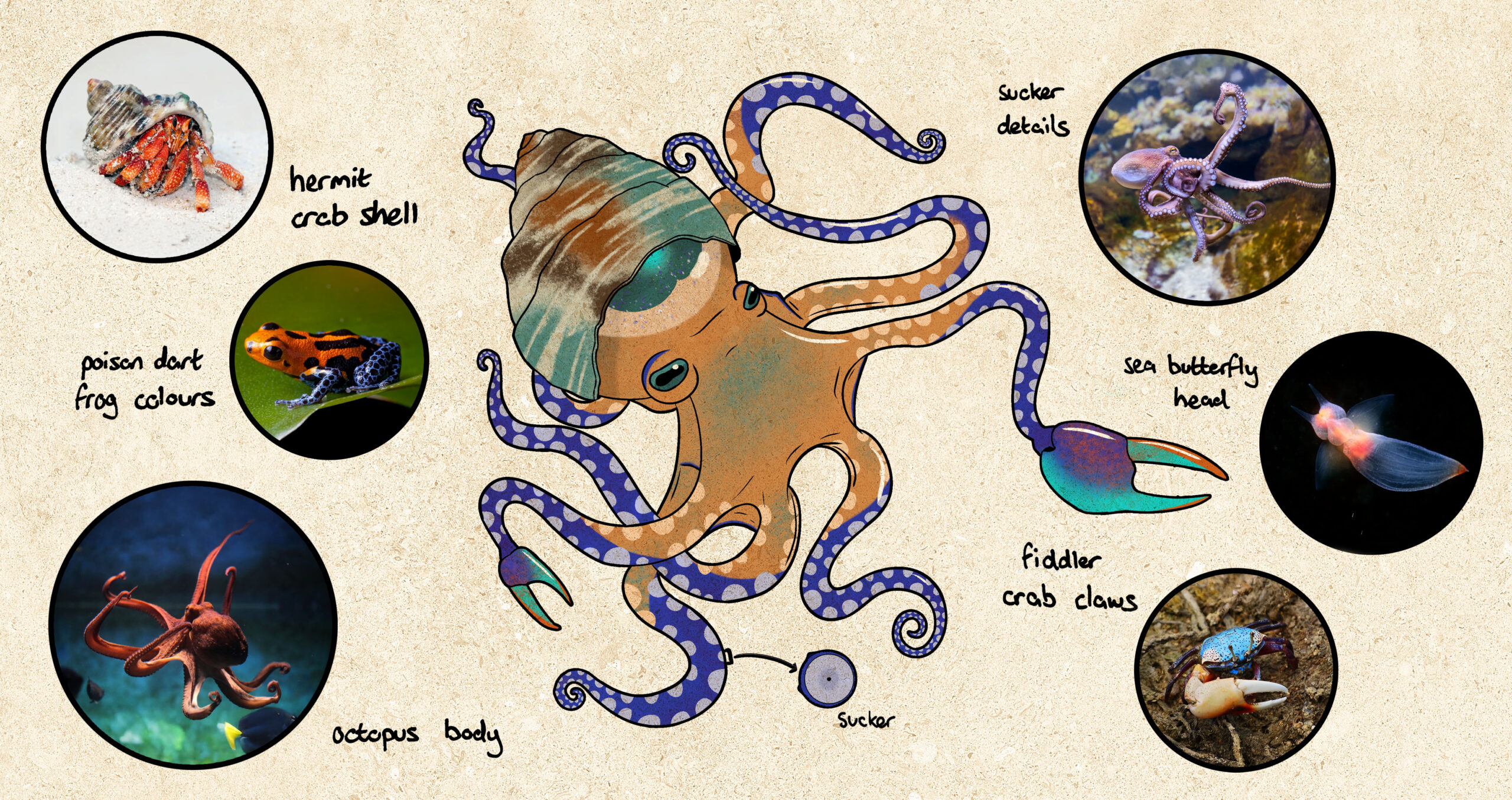
Design
This creature is designed to resemble an octopus. The vivid orange, blue and green tones act as a way to deter predators, similarly to that of a poison dart frog. It also has a glowing ball inside its head, which is used to attract prey in the darkness of the ocean depths. The octopus is also armed with 2 claws, to catch the prey attracted to it. As the lure inside the head of the octopus is under translucent skin, it is also partly protected by a shell, inspired by the hermit crab.
The creature was designed carefully to be able to protect itself against danger, and be able to effectively hunt by luring its prey. As well as its practically, it also has visual intrigue, with its bright colours and asymmetric aspects, such as its shell and uneven claws, inspired by the fiddler crab.
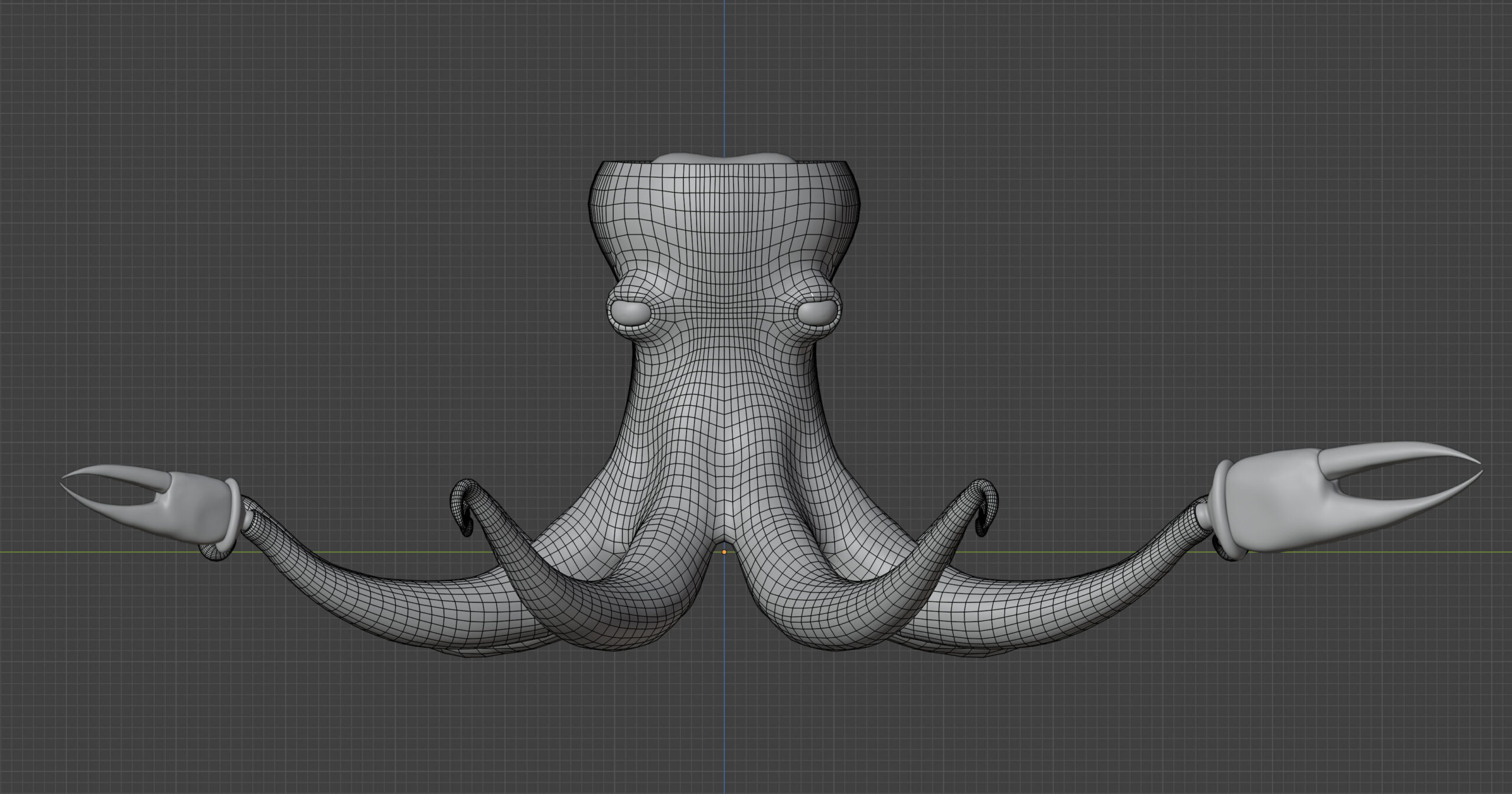
Modelling and Retopologising
The main body of the creature, being the head and tentacles, was modelled and sculpted using dynamic topology, which allowed me to work more freely with the mesh, which was especially important from working with the tentacles of the creature.
Due to using dynamic topology, the mesh for the main body needed to be retopologised, which I did manually using a shrinkwrap modifier to extrude planes around the mesh. This process ensured that I was able to create clean loops around the mesh, while also having control over where to divide the loops, such as around the eye mask.
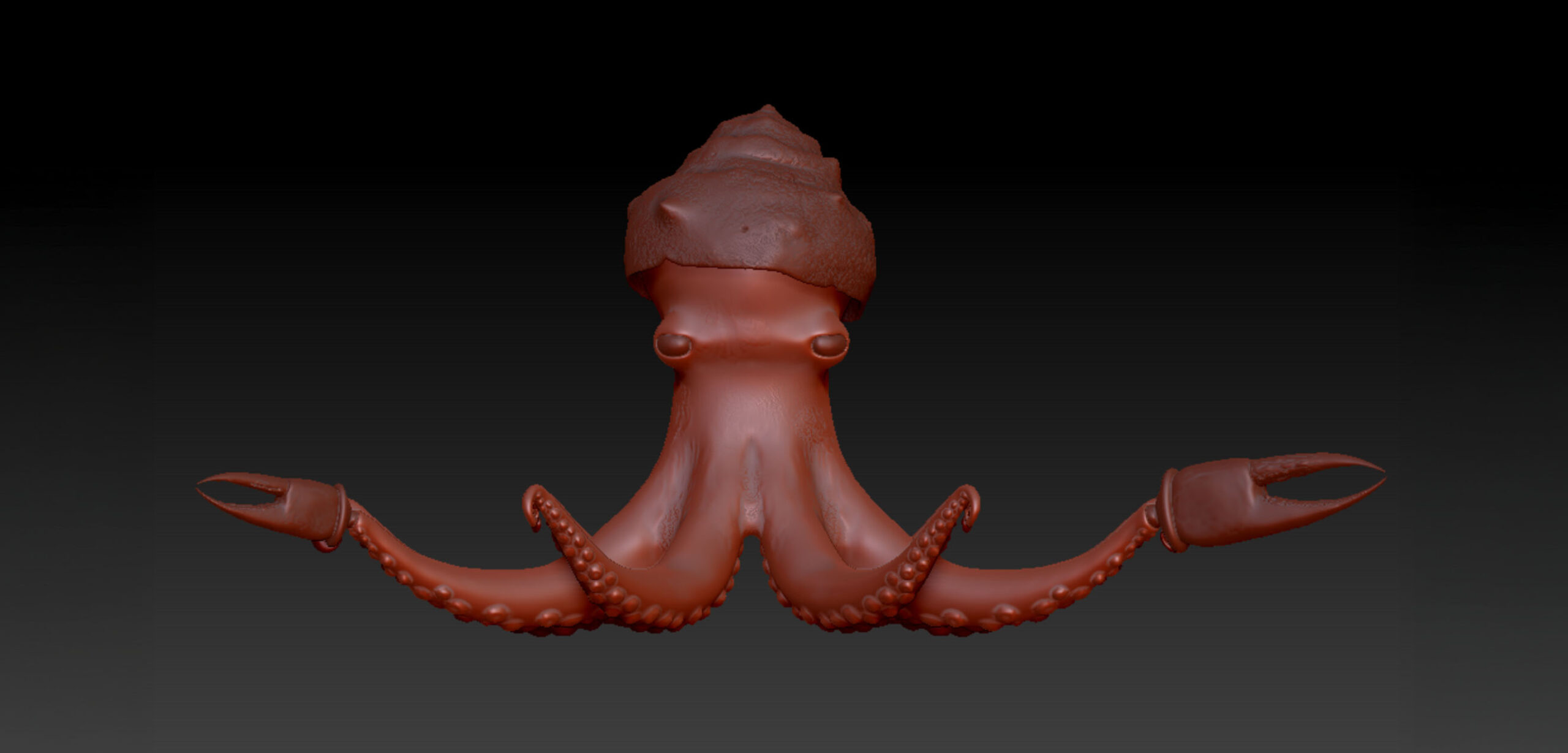
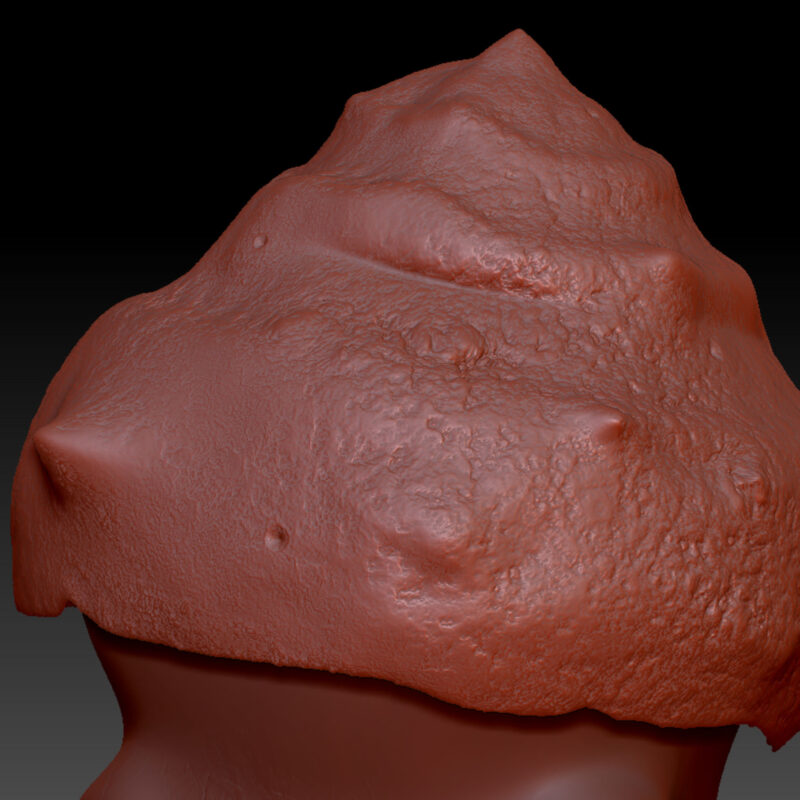
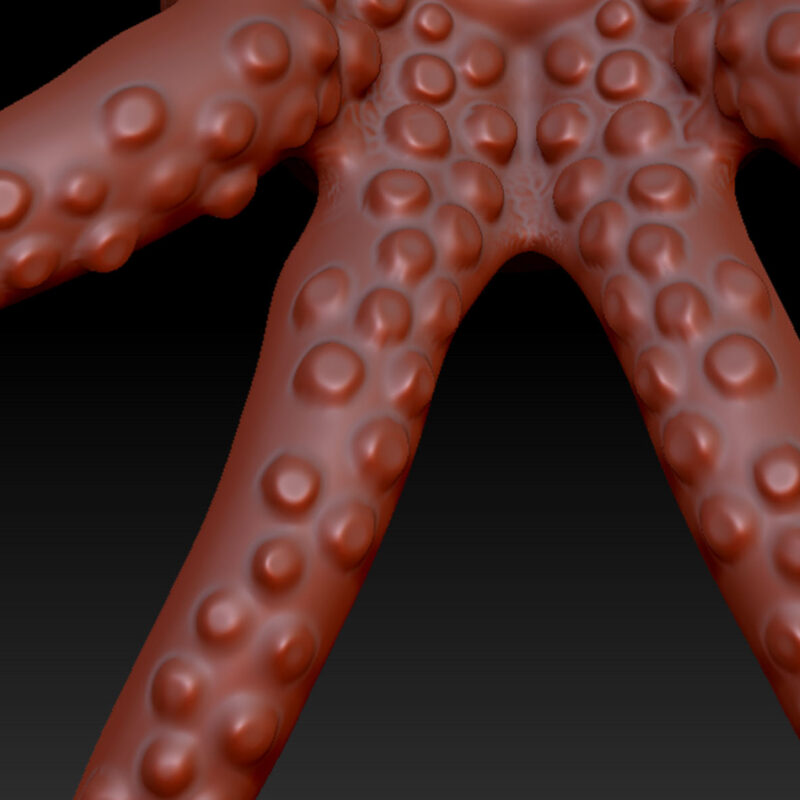
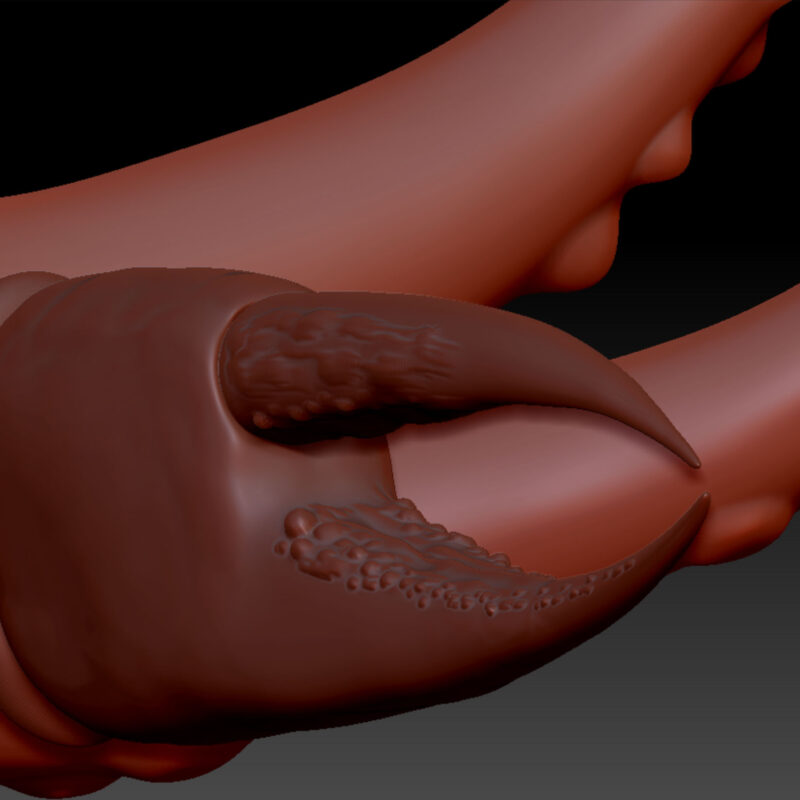
Detailing in ZBrush
After retopologising in Blender, I worked in ZBrush to paint on details, such as the suckers on the underside of the tentacles, teeth on the claws and erosion on the shell. As well as this, I also added finer details, such as scratches on the shell and claws and veins on the body of the creature.To ensure that all of these details were clear, I worked between subdivision levels. Due to this models being heavily subdivided, I baked the details created in ZBrush on to the low poly mesh created in Blender to be textured.
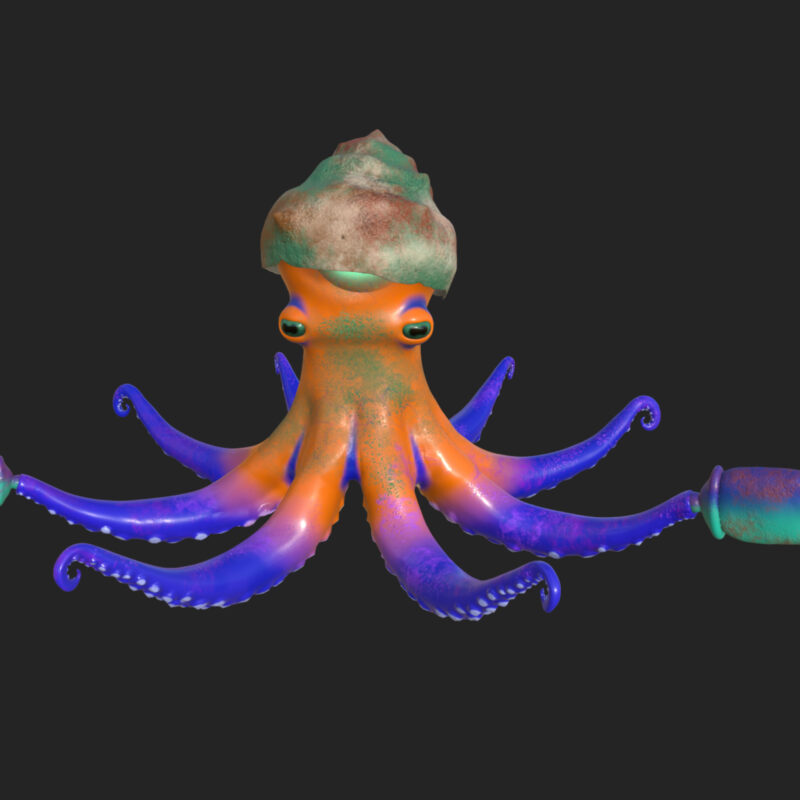
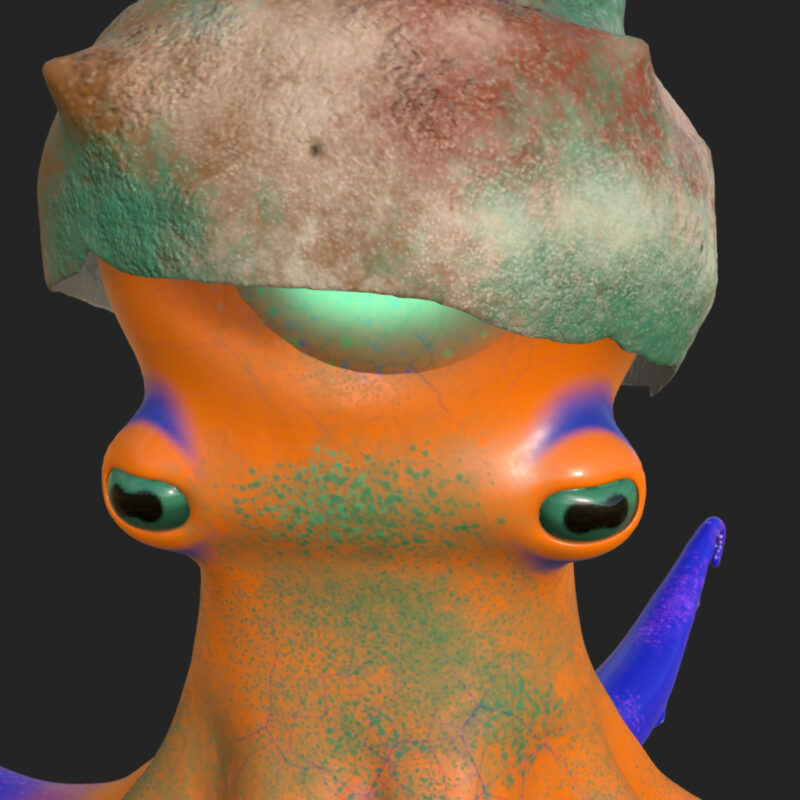
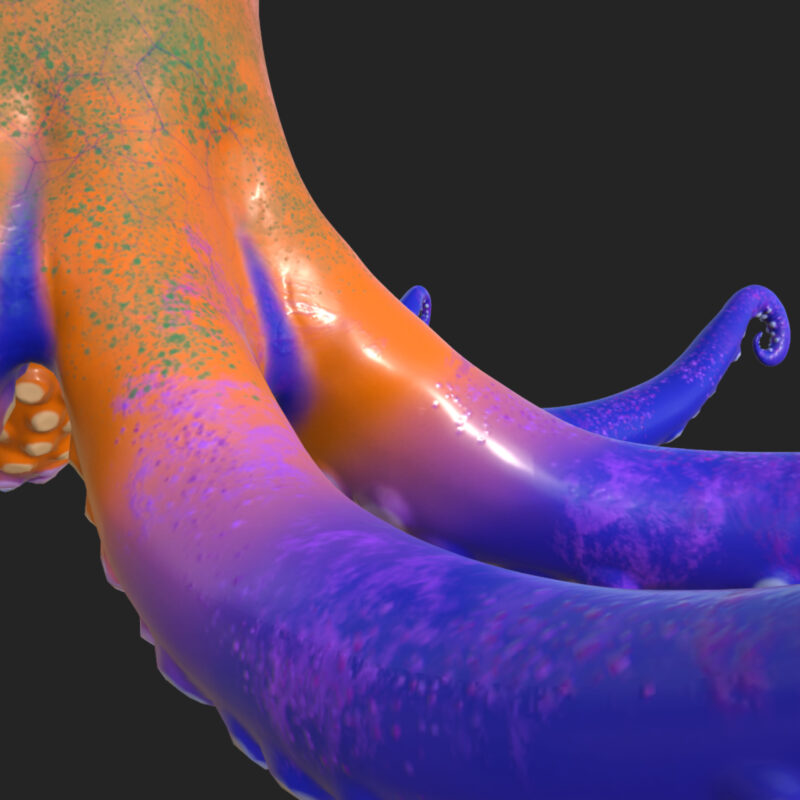
Texturing
This model was textured in Substance Painter, with textures painted on to the model manually as opposed to using the poly fill method. This allowed me to work with different brush alphas to paint a variety of different textures, enabling me to add details such as roughness of the creature’s skin and a glow to the bioluminescent part of the creature’s head.
The colour scheme for the creature focuses on using complementary colours at the opposite side of the colour wheel, with both orange and blue as primary colours, and green and purple as secondary colours. This ensured that the creature had visual appeal on top of the bright colours having the purpose of protecting the creature.
Unreal Engine
Once the work on the creature had been completed, I imported it into Unreal Engine to create a scene, showcasing the creature in a habitat it was designed to thrive in. I composed an environment using assets on Fab, to create a cave on the sea floor where the creature can safely lure prey to.
To create the effect of being underwater, I worked with the lighting of the scene, using blue hues and dim light to create the effect of being deep under the water where light begins to struggle to shine through the water.